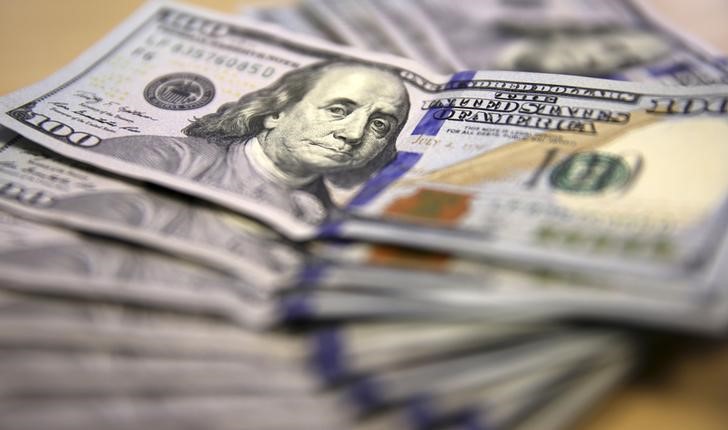By Peter Nurse
Investing.com -- The dollar rose in early European trade Thursday, climbing to levels not seen for around two months after the Federal Reserve surprised markets with a hawkish turn, bringing forward its timetable for raising interest rates to 2023.
At 3:15 AM ET (0755 GMT), the Dollar Index, which tracks the greenback against a basket of six other currencies, was traded 0.2% higher at 91.418, after surging nearly 1% overnight, its biggest rise since March of last year.
USD/JPY was up 0.1% at 110.75, just off its recent high of 110.83, a level not seen since April 1; EUR/USD fell 0.1% to 1.1986, after falling over 1% overnight, its biggest drop since April 2020; GBP/USD was flat at 1.3987, just above its lowest level since May 7; and the risk-sensitive AUD/USD was up 0.1% at 0.7617, recovering to a degree after earlier falling to 0.7598, the lowest since April 13.
The U.S. Federal Reserve concluded its latest two-day policy meeting on Wednesday, and surprised no one by maintaining the current levels of interest rates and monthly bond purchases.
However, the jolt came when new projections saw 11 of 18 central bank policy makers plan for two interest rate increases of 25 basis points in 2023, a year earlier than expected, and a sharp change from the previous meeting when none of these officials were looking for hikes during that year.
With inflation soaring and the economy recovering quickly from the stresses brought about by the pandemic, the market had been expecting the Fed to discuss a timetable for reining in its massive bond-buying program. But this hawkish turn surprised.
The benchmark 10 year Treasury yield was at 1.581%, after rallying to as high as 1.5940% from as low as 1.4820% on Wednesday.
“With the world’s so-called ‘smartest market’ expecting a quicker and more aggressive liftoff in interest rates, the fallout from this Fed meeting could continue to drive all markets in the days and weeks to come,” said Matthew Weller, Global Head of Market Research at GAIN Capital.
The only major currency to withstand the dollar’s advance was the New Zealand dollar, with NZD/USD up 0.4% to 0.7076 after the country’s gross domestic product surged 1.6% in the first quarter from the previous quarter.
This was far more than the 0.5% gain expected, as a booming property market helped the economy overcome the collapsing tourism sector with the country’s borders closed.
Elsewhere, USD/BRL was largely unchanged at 5.0556 following Wednesday’s decision by Brazil’s central bank to raise its benchmark interest rate by 75 basis points to 4.25%, as previously guided, as it struggles to cope with rampant inflation.
These central bank meetings continue thick and fast, with the Swiss National Bank, the Norges Bank and Turkey's central bank meeting later Thursday to decide monetary policy.
The SNB is likely to keep its benchmark interest rate at -0.75%, the lowest level globally, with inflation not an issue, while Norway’s central bank is likely to keep its deposit rate at zero, but suggest a hike is coming as output in this Nordic country nears pre-pandemic levels. An unchanged decision is also expected in Turkey
